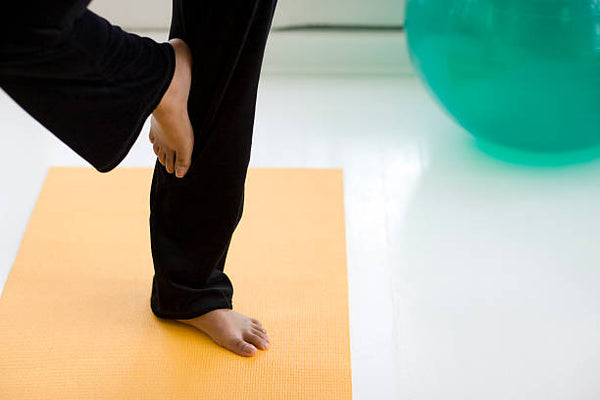Understanding the Neutral Foot

Based on the StepStrong Foot Quiz it was determined that you have a neutral foot type.
With our feet as the foundation to our body alignment and function, having a neutral foot doesn’t mean you are void of any foot stress or fatigue. Our feet are stressed with every step we take and therefore require daily mobilization and strengthening to lower the risk of injury.
Before you start to celebrate about having a neutral foot, we still need to implement daily habits for healthy feet and movement.
We have some great tips to help you keep your feet strong, mobile and sensory sensitive.
Tip #1 – Sensory stimulation builds foot awareness

To have strong feet needs to start with foot awareness. Do you feel your feet? Are you aware of your pressure distribution?
Integrating at least 30 minutes of daily barefoot stimulation is a great way to improve foot awareness and foot strength.
Kick it up a notch by walking on different surfaces such as outdoors, pebble baths or even textured mats.
Tip #2 – Daily foot release can provide great relief

Releasing the feet for at least 5 minutes is a great way to release tension and stress from the small muscles of the feet. Standing on a golf ball or lacrosse ball can bring a massage to the muscles.
Don’t stop there though. Incorporate a simple foot release at the start of the day or before you workout.
Tip #3 – Short foot is a go-to foot exercise

Just like any other group of muscles in our body, our foot muscles needs to be strengthened and worked out. One of the best go-to exercises for strengthening the feet is called short foot.
Short foot exercises is engaged through the action of pushing the toes down into the ground. The action of pushing the toes down can be experienced from a forward lean.
Start by standing tall with the feet shoulder width apart. Keeping the body stiff, start to lean forward. As you lean forward, you should feel the toes pushing down into the ground. Keep that contraction of the toes pushing down but lift the body so you are standing straight again.
Once you understand the action of pushing the toes down, you can do this throughout your day. Whether you are squatting at the gym or doing tree pose in yoga, push the toes down to activate your foot muscles.
Tip #4 – Balance training is functional to our feet

One of the most functional positions we can train our feet and body is on a single leg. With every step we take we transition into balancing on one leg. As we age we start to lose our ability to balance and transition to one leg. This can greatly slow and change the way we walk.
Incorporate single leg balancing when at home, the gym or if you work at a standing desk. Upgrade your balance training by doing it barefoot, on your foot tripod and pushing your toes down into the ground.